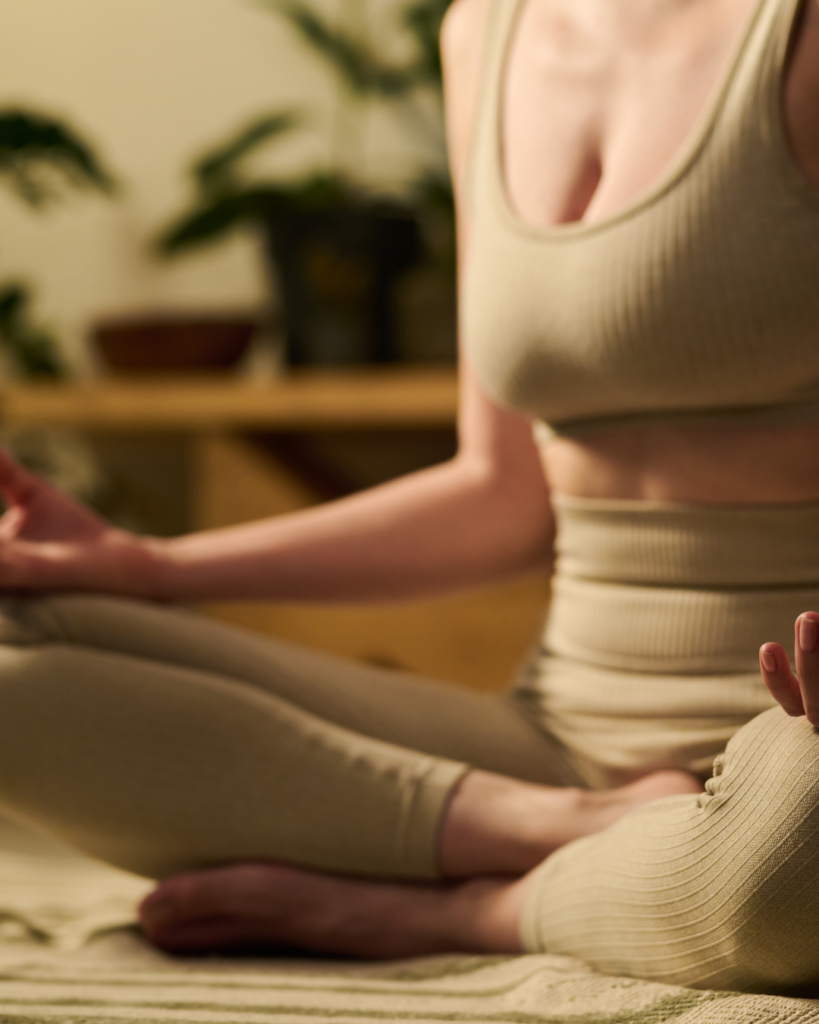When I got sick, I started meditating. At first, it was really weird because I was truly the most restless person in the world. Inner peace? Balance? Not a chance. That’s why it was so hard for me. I also wrote a chapter about it in my book “Miss Sunshine & der böse Wolf, Mit Achtsamkeit zu einem gesünderen Leben” and interviewed a meditation teacher. Over time, I got better and better, and now I actually look forward to my meditation sessions. Sometimes it’s just a brief session, and sometimes it’s longer, depending on how it fits into my day. But now, let’s get to the facts:
The roots of meditation go back to ancient times. The earliest records of meditative practices come from India, where they became part of Hinduism and later Buddhism. In the Vedas, the sacred scriptures of Hinduism, there are references to meditative techniques aimed at expanding consciousness and gaining spiritual insights.
Over the centuries, meditation spread to various cultures. In Buddhism, Vipassana meditation (insight meditation) developed, while in Taoism in China, meditative practices like Tai Chi and Qigong emerged. Meditation also found its place in the West, especially in the 20th century, when psychological and scientific studies highlighted its benefits.
There are many different forms of meditation, each with its own techniques and goals. Here are some of the most well-known ones:
- Mindfulness Meditation: This form focuses on consciously experiencing the present moment. Mindfulness can be practiced through observing the breath or noticing thoughts and feelings without judgment.
- Transcendental Meditation: This technique involves repeating a specific mantra in a quiet environment. The goal is to reach a state of deep relaxation and inner silence.
- Loving-Kindness Meditation (Metta): This form cultivates compassion for oneself and others. You repeat phrases of goodwill and send positive thoughts to yourself, loved ones, or even strangers.
- Zen Meditation (Zazen): This practice comes from Zen Buddhism and involves sitting in a specific posture and focusing the mind.
Meditation has been proven to provide numerous health benefits:
- Stress Reduction: Meditation can help reduce stress levels, leading to better overall health.
- Improved Sleep Quality: Regular meditation can improve sleep quality and reduce sleep disorders.
- Pain Relief: Studies have shown that meditation can even help relieve chronic pain.
- Strengthened Immune System: Meditation can boost the immune system and promote overall health.
- Heart Health: Regular meditation practice can lower blood pressure and improve heart health.
- Emotional Stability: Meditation promotes emotional health and helps better regulate negative emotions.
- Self-Awareness: Through self-reflection and mindfulness, self-awareness can be increased.
- Increased Life Satisfaction: Many people report higher life satisfaction and inner peace through regular meditation.
- Better Relationships: Meditation can improve interpersonal relationships by fostering empathy and compassion.
- Concentration and Focus: Meditation can improve the ability to concentrate and stay focused.
- Creativity: The practice of meditation can stimulate creative thinking and improve problem-solving skills.
A Guide to Getting Started with Meditation:
- Find a Quiet Spot
Choose a place where you won’t be interrupted. It should be a quiet room or an outdoor spot where you feel comfortable. Ensure the space has a pleasant temperature. - Set a Time Limit
Start with short meditation sessions, around 5 to 10 minutes. You can gradually increase the duration as you become more comfortable. It’s best to set a timer. - Choose a Comfortable Position
Sit in a comfortable position. You can sit on a chair, cross-legged on the floor, or even lie down—as long as you don’t fall asleep. Keep your back straight and relax your shoulders. - Focus on Your Breath
Gently close your eyes and begin to observe your breath. Breathe deeply through your nose, letting the air slowly exit through your mouth. Notice how your abdomen rises with each inhale and lowers with each exhale. - Let Thoughts Come and Go
It’s normal for thoughts to arise during meditation. Instead of fighting them or trying to ignore them, simply acknowledge them and let them pass by. Gently bring your attention back to your breath. - Use Guided Meditations
If you struggle with meditating on your own, guided meditations can be helpful. There are many apps and online resources (like YouTube or Spotify) offering guided sessions. - Be Patient with Yourself
Meditation is a skill that takes time to develop. Be patient with yourself and don’t expect too much from yourself at the beginning. 🙂

